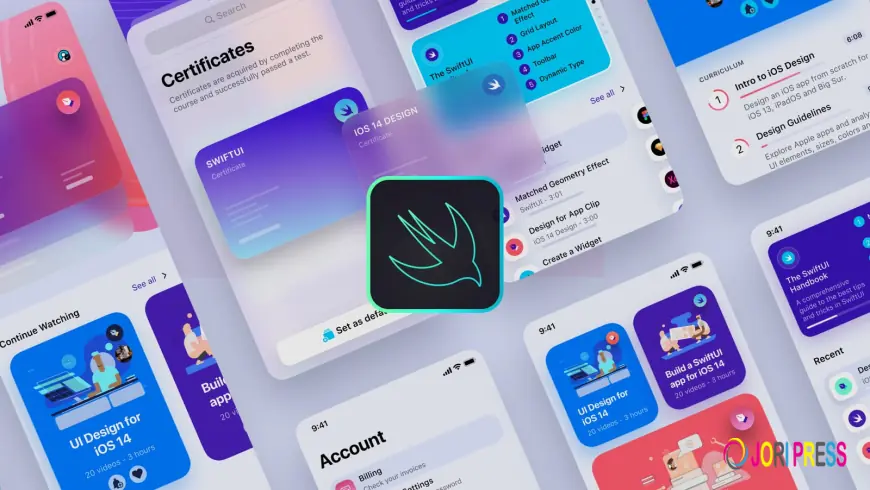IOS Mobile App Development: A Complete Guide for 2025
In a world where smartphones are an integral part of life, iOS mobile app development continues to dominate the premium segment of the app market.

In a world where smartphones are an integral part of life, iOS mobile app development continues to dominate the premium segment of the app market. With over a billion active Apple devices globally, building an app for iOS isn’t just an option—it’s a strategic business move.
This guide walks you through everything you need to know about iOS app development—from tools and technologies to trends shaping 2025.
What Is iOS Mobile App Development?
iOS mobile app development refers to the process of creating software applications that run on Apple’s iPhone, iPad, and iPod Touch devices. These apps are distributed through Apple’s App Store and built using tools like Xcode, Swift, and Objective-C.
Why iOS App Development Is Important in 2025
In 2025, the global mobile market continues to grow, but Apple users stand out for their high engagement and strong spending power. Businesses that target iOS users often benefit from better ROI and customer loyalty. Whether you’re developing a fintech, health, or eCommerce app, iOS provides a secure and reliable platform.
Benefits of iOS App Development
4.1 Enhanced Security
Apple’s closed ecosystem ensures strict data privacy and protection, making iOS one of the safest platforms for app development.
4.2 Loyal User Base
Apple users are known for their loyalty. Once they trust a brand, they tend to stick with it—an advantage for long-term business growth.
4.3 Better App Performance
iOS apps run smoothly across devices due to Apple’s hardware-software integration, ensuring faster load times and fewer bugs.
4.4 Simplified Testing Process
Unlike Android, which operates across multiple devices and OS versions, iOS has a limited number of devices, reducing testing complexity.
iOS vs Android Development: What’s the Difference?
While Android dominates in market share, iOS leads in revenue and quality. iOS users typically spend more on in-app purchases, and apps often have cleaner designs due to Apple’s strict guidelines. Developers also find it easier to monetize apps on the App Store compared to Google Play.
How the iOS Development Ecosystem Works
6.1 Xcode IDE
Apple’s official development environment, Xcode, allows developers to design interfaces, write code, and test apps all in one place.
6.2 Swift and Objective-C
Swift is the preferred programming language for iOS app development in 2025. It’s fast, secure, and developer-friendly, replacing Objective-C in most modern apps.
6.3 Apple Developer Program
To publish apps on the App Store, you must join the Apple Developer Program, which provides access to APIs, beta testing tools, and app analytics.
Step-by-Step Process of iOS Mobile App Development
7.1 Market Research
Understanding your target audience and competition helps define app goals and features.
7.2 Wireframing & Prototyping
Sketching the layout and user journey ensures your app is both intuitive and functional.
7.3 UI/UX Design
Designers use Apple’s Human Interface Guidelines to create sleek, responsive interfaces.
7.4 App Development
This is where coding begins—using Swift, frameworks like UIKit, and tools like Core Data or ARKit for advanced functionality.
7.5 Testing & QA
Quality assurance ensures the app runs seamlessly across iPhones and iPads before submission.
7.6 Deployment on App Store
After approval from Apple’s review team, your app goes live on the App Store for users worldwide.
7.7 Post-Launch Maintenance
Regular updates, bug fixes, and feature improvements keep users engaged.
Essential Tools for iOS Developers
-
Xcode – The main IDE for app creation
-
TestFlight – For beta testing
-
Firebase – For analytics and backend integration
-
SwiftLint – For clean code management
-
CocoaPods – For managing dependencies
Key Features to Include in Modern iOS Apps
-
Push notifications
-
Dark mode compatibility
-
Biometric authentication (Face ID, Touch ID)
-
Cloud sync
-
Offline mode
-
AI-based recommendations
Common Challenges in iOS App Development
Developers often face issues like:
-
Meeting Apple’s strict approval guidelines
-
Ensuring backward compatibility
-
Handling app performance optimization
-
Managing frequent iOS updates
Best Practices for iOS Mobile App Development
-
Follow Apple’s Human Interface Guidelines (HIG)
-
Optimize for performance and battery life
-
Implement robust security protocols
-
Regularly test across devices
-
Prioritize accessibility and inclusivity
Trends in iOS App Development for 2025
-
AI and Machine Learning Integration
-
Augmented Reality (AR) Experiences
-
SwiftUI Adoption
-
Wearable App Development (Apple Watch)
-
Voice and Gesture-Based Interfaces
Cost of Developing an iOS App
The cost depends on complexity and features:
-
Basic app: $5,000 – $15,000
-
Mid-level app: $15,000 – $50,000
-
Complex app: $50,000 – $150,000+
Location of developers and ongoing maintenance also affect pricing.
Hiring an iOS App Development Company
When choosing a partner:
-
Check portfolio and previous work
-
Ensure they follow Agile methodologies
-
Look for post-launch support options
-
Ask about security and scalability
Conclusion
iOS mobile app development continues to be one of the most rewarding opportunities in tech. With Apple’s secure ecosystem, high-value audience, and evolving technologies, the potential for businesses is limitless. Whether you’re a startup or an established enterprise, building an iOS app in 2025 is a powerful step toward digital growth.
ocloudsolutions.net/blog/Complete-Guide-to-iOS-Mobile-App-Development-in-2025/
What's Your Reaction?
 Like
0
Like
0
 Dislike
0
Dislike
0
 Love
0
Love
0
 Funny
0
Funny
0
 Angry
0
Angry
0
 Sad
0
Sad
0
 Wow
0
Wow
0












































![Introduction ✈98~[(2121)]?~[{0875}] to the Stock market courses](https://joripress.com/uploads/images/202509/image_430x256_68bf0343969fb.webp)






